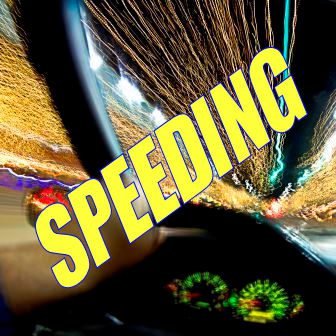
The summer season kicks off with a motorcyclist speeding towards the beach at 171 miles per hour.
What?
Sunday May 21, 2023, New Hampshire state police clock a motorcycle at 120 headed towards Hampton Beach. By the time they stop him the cyclist’s speed hit … yes you read it right … 171 miles per hour.
As if that wasn’t enough to make up an accident waiting to happen, the cyclist was also charged with drunk driving. State police, knowing some might question the speed, released a photo of the radar showing the 171 miles per hour readout.
New Hampshire’s Route 101 ties Manchester and other towns to the beach. But it hardly qualifies as the Daytona 500 nor the Highway to Hell this motorcyclist might have made it had he not been stopped. The highway often makes headlines due to motor vehicle accidents.
As a personal injury attorney for over 25 years I’ve seen speeding cause many car accidents. Speeding itself causes tragic accidents with serious personal injuries and death. Combined with drunk driving and other factors, speeding increases the risk of accidents and heightens the severity of injuries.
Statistics show speeding as a factor in 27 percent of highway fatalities. National Highway Traffic Safety Administration numbers have indicated a four percent year-to-year increase in speeding-related fatalities. In one year, 37,461 people died in U.S. traffic accidents. 10,111 of those fatalities happened in crashes where at least one of the drivers was speeding.
Speeding Effects
Speeding ups the stakes in car accidents in many ways:
- High speed intensifies crash conditions. A collision at higher speeds means the crashing vehicles contain more energy to discharge before they come to rest. That means more damage to the vehicles and more serious injuries to drivers, passengers and pedestrians.
- Braking distances increase with higher speed. In other words it takes more time and the car travels a greater distance from the time brakes are applied until the vehicle stops.
- In addition to increased stopping distances, add more delay due to human reaction time. Think of an animal walking into the path of your car, or a car suddenly cutting you off. On average in can take three-quarters of a second simply to recognize the danger. Add another three-quarters of a second for human reaction time to contemplate evasive action. Apply the brakes? Turn the steering wheel? Honk? Depending on the speed of the vehicle, the car can cover quite a distance.
Those factors come together to increase the likelihood of a crash at higher speeds. And the higher the speed, the more serious crash injuries are likely to be.
Speeding and Stopping Distance
Allowing three-quarters of a second for perception of the threat and another three-quarters of a second actual reaction time, you’ve eaten up a second and a half. In that time a car going 55 miles per hour travelled forward 121 feet before applying the brakes. After putting on the brakes, an average passenger car will take another 144 feet and four and one half seconds to come to a complete stop. And that assumes dry pavement.
So at 55 miles per mile, on average, it takes 265 feet to fully stop a car. Just short of the length of an entire football field. Many other factors come into play to lengthen or shorted this average including vehicle weight, whether the road is wet or dry, tire conditions, and others.
Assuming the same average conditions and a car going 70 miles per hour will travel 387 feet before stopping. A car moving at 30 miles per hour won’t stop 119 feet. Generally speaking as speed doubles, stopping time quadruples.
Speeding Laws
We all know that speeding tickets jack up your insurance rates. But how much? There’s actually a list of speeding laws, state-by-state including the ticket’s actual cost in court. Don’t thank me, thank the U.S. Department of Transportation.
Speeding tickets bring enough bad luck and expense. The real shock for many comes through enhanced penalties for repeat offenders. Many states also pull drivers licenses for habitual offenders.
Accidents and Speeding
If you have been in an accident, signs that the other driver was speeding are usually pretty obvious. Fairly clear evidence of high speed reveals itself through extensive body damage. Speed breaks glass and shreds metal. Extremely long skid marks also indicate high speed. Even worse, after an accident there may be no skid marks at all, showing the driver was distracted.
As a car accident lawyer, common sense and experience lead to the conclusion that many drivers simply don’t think about speed. People are in a hurry. Drivers pressed for time face busy schedules crammed with family needs, demands of a job and other outside activities. Time behind the wheel of a car seems like the one variable in a schedule that might be controlled. But after viewing numerous serious car accidents with catastrophic injuries and death, one has to wonder whether the driver thought about what could happen at high speed.
Speeding Only One Crash Cause
Reasonable people understand that pushing the petal to the metal to 100 miles per hour increases the risk of a serious car accident. As we saw in the above look at speeding and stopping distances, a doubling of speed increases by four times the stopping distance. In many situations pushing speed even only five or ten miles per hour above the limit can lead to trouble.
Accident investigators often find that speeding itself is not the only cause of a bad accident. High speed many times contributes to the accident and intensifies the severity of a motor vehicle collision. Think of bad driving conditions like a wet or snow covered roadway. Construction zones present their own dangers.
Drivers become confused by unfamiliar highways or city streets. Multiple exit and entrance ramp highway signs crammed into a short stretch of roadway cause confusion. Distracted drivers behind the wheel eat, drink, text, turn around to talk to back seat passengers and otherwise fail to pay full attention to driving. Take any one or a mix of these conditions, add high speed and likelihood of an accident increase.
Speeding’s Bottom Line
Speeding plays a major role in almost one third of all car accidents in the U.S. Traffic experts also warn high speed increases the extent of injuries in a collision. At the same time, speeding is only one kind of driver negligence that causes highway accidents.
Even with allegedly improved safety features in newer cars, drivers and passengers face higher risk of serious injuries where motor vehicle drivers speed.
The author, attorney Andrew D. Myers, has seen the devastating effects of tragic car accidents. Having handled personal injury cases in New Hampshire and Massachusetts for over 25 years he understands the extent to which accident victims and their families and friends suffer. The Law Offices of Andrew D. Myers have recovered millions for their clients. If you have been injured in an accident caused by speeding or any other negligence of the other driver, contact the office for a free initial consultation.
Photo Credit:
Modified from “Speed limit 25 thru Old Town Fort Collins, Colorado” by Paul L. Dineen, on Flickr under license with Creative Commons. Thank you.
Sources:
Motorcycle Operator Arrested for Traveling 171 MPH and DWI, NH State Police News Release, May 22, 2023.
Speeding, NHTSA, Release # DOT HS 812 480, March, 2018.
Visits: 34





Great and helpful blog to everyone. Thanks a lot for sharing this amazing article.